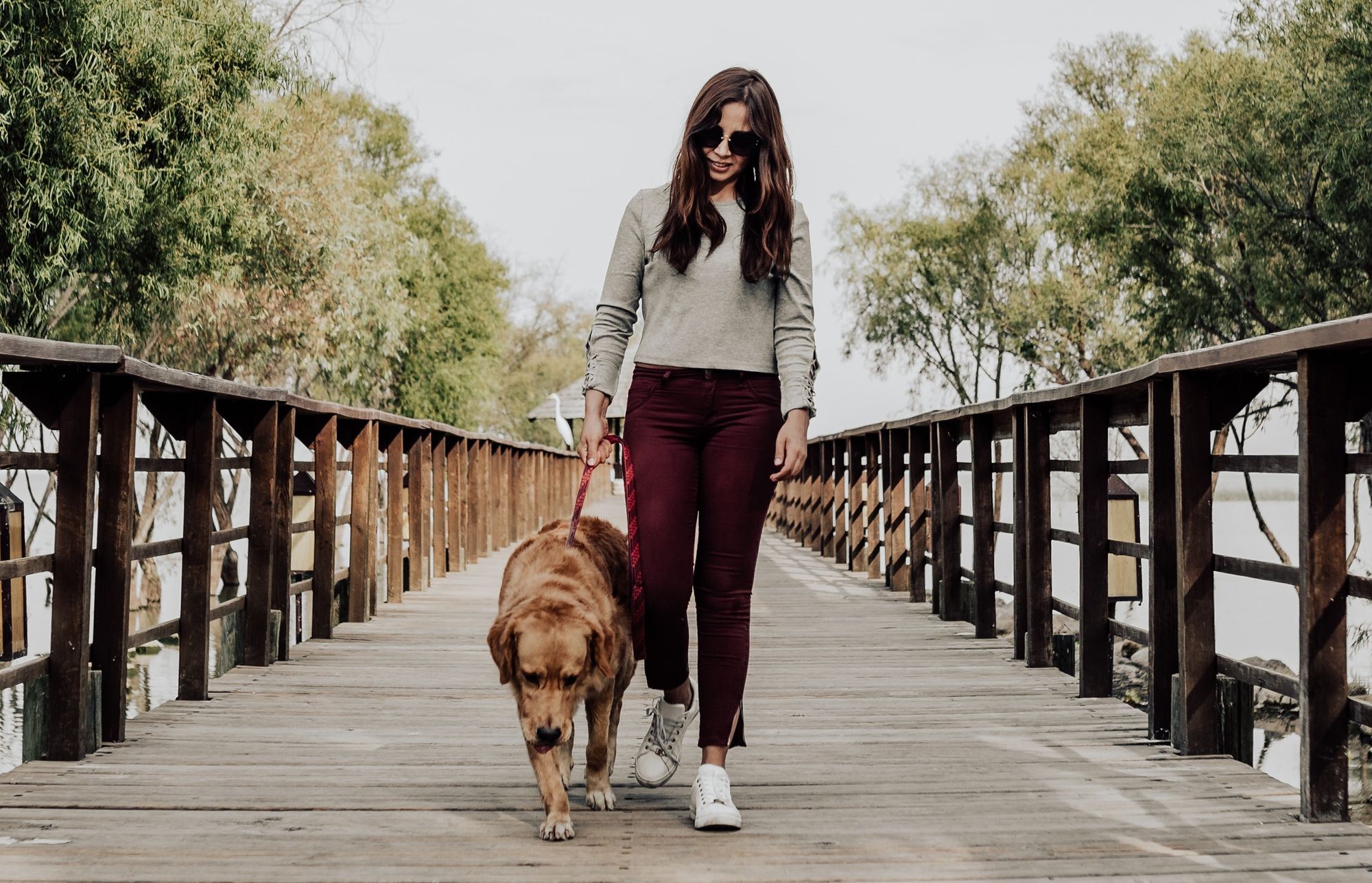5 Ways You've Been Keeping Your Mind and Body Healthy in Lockdown
Happy Mental Health Awareness month! You recently shared your favourite ways to keep your body and mind healthy during this pandemic. Find out what researchers have to say about it too.

By: Ritika Puri
Happy Mental Health Awareness month! Staying connected can help us feel mentally and physically fit, ready to conquer a new day.1 But staying connected doesn’t just mean being connected to other people. In a recent Honeybee Instagram (IG) Giveaway, we asked you how you have been taking care of your mind and body during the lockdown. We broke down your 173 responses into 5 categories and backed it with the latest in mental health and psychology research to give our two cents. Here’s how you’ve been taking care of yourselves in the last year.

We segmented the types of activities into 5 broad categories. “Walks in Nature” was the most popular category (more on this below). Keep reading to find out how your responses on staying healthy are backed by current scientific research!
1. Connect with Yourself
We’ve all heard it by now: ‘treat yourself to some self-care.’ While self-care is an important part of taking care of your mental and physical health, it seems hard to trace the origins of the term beyond the thousands of Instagram posts that compel us to go buy a bath bomb or pretty journals - even if we don’t like to write and only have standing showers!
Self-care, today, seems like it’s about carefully staged social media posts. Scrolling through Instagram and TikTok feeds our persistent Fear of Missing Out (FOMO). Research into mental health and loneliness shows that limiting our social media use by reducing our social media screen time by just 30 minutes a day, could significantly improve our well-being and reduce the feeling of FOMO.2
Contrary to the FOMO-inducing self-care trends, your comments took us back to the basics reminding us that taking care of our basic health necessities can put us in the right frame of mind to stay physically and mentally well while we’re stuck at home.

The top self-care activities were actually healthy lifestyle changes including: eating healthy, taking breaks, and staying hydrated, followed by meditation, then maintaining work-life balance, and having a healthy sleep schedule.
2. Connect with Your Physical Self
Another important part of self-care is physical activity. Among TikTok’s intense push-up and flexibility challenges, you reminded us that a really good, and often underrated, workout is walking. You were absolutely right again because science proves that walking is a great way to stay physically active.

Walking is a fantastic option because unlike many high intensity workouts it is quite safe, doesn’t require any fancy equipment, and most populations, across various ages, can partake in the activity.3 You can go at your own pace and can break up your walks so that you go for many mini-walks throughout the day. It has obvious health benefits too! It is a dynamic aerobic exercise, so it increases metabolism and is linked to an increase in bone strength across all ages.3
There is also evidence that consistent walking may help with prevention of heart attacks and may be used as a potentially helpful treatment for hypertension, muscular disorders, and for rehabilitation after heart attacks.3 One study also found that citydwellers have a lower risk of being overweight and obese than those who live in suburbs, likely because of the culture of walking everywhere that exists in cities4 - we’re looking at you Emily in Paris!
Not to mention that walking can be peaceful and reflective; whether you want to go for a quiet walk by a pond or go for a power walk listening to your favourite music or podcasts on your lunch break, which was also mentioned by several of you in the IG comments. You can even go with your cuddly companion. In fact, dog owners spend close to 300 minutes walking per week, 200 more than non-dog owners.5 Here’s your sign to adopt a dog, for your health of course!
3. Connect with Nature
By far, taking a walk outside and/or being in the proximity of nature was THE most highly commented response in our IG Giveaway. Your responses were perfectly aligned with the research because even 2 hours a week outside has been shown to lower blood pressure, lower stress hormone levels, improve immune system function, increase self-esteem, reduce anxiety, and improve mood6 (now that’s a long list!). Being in nature is not only important, but it’s actually vital to keep you physically and mentally feeling your best.7 It’s amazing to think that your body creates vitamin D just by being in the sunshine, a vitamin that is essential for maintaining strong bones!8
A great way to get outside is to take mid-day breaks when it’s sunny and go for a quick walk around your neighbourhood or workplace; maybe even convince your work team to have a walking meeting! Getting outside, however, may not always be easy depending on your situation. For readers that are unable to go out for very long, hanging a bird feeder in your backyard or by your window is a great way for nature to come to you.
Connecting with nature also becomes infinitely more difficult when you live in a congested city or don’t have access to parks nearby or transportation to allow you to go somewhere green. A great way for interacting with greenery in this situation is to bring it inside and adopt a houseplant. If you are looking for a more cuddly investment, consider adopting a pet - they come with the added benefit that dog ownership is actually linked to lower mortality rates!9
4. Creative Connections

A great way to get off social media and make time for yourself in a crowded - or quiet! - house is to tackle at-home DIY. In response to our IG giveaway, the most popular hobbies you commented you were engaging in were cooking and reading, amongst others like playing online games, listening to music, and photography. Eating is not only a necessity, it’s my favourite time of the day! Why not make the eating process longer and take time to cook your meals too; it has the added benefit that you get a rest from your screens and can brag to your friends about being the next Gordon Ramsey.
Trying out new hobbies can not only be rewarding, but certain creative outlets can also have potential benefits for people experiencing mental health problems.10 You can try jumping on the latest trends like tie-dying your clothes, DIY-ing scrunchies, baking everything under the sun, and trying out pesto eggs. Or, if you’re still in love with some old trends like me, keep making variations of dalgona coffee, baked feta pasta, or even slime (edible or non-edible). The possibilities are truly endless and will allow you to relive your sixth grade arts and crafts class!
5. Maintaining Healthy Connections with Others
Amid thousands of articles about staying connected to your loved ones, those locked down with other household members know that over-connection is likely a bigger problem than staying connected. In the last year, divorce rates spiked across the world, especially in areas that had or have particularly strict lockdown restrictions.11 Anyone who has been inside with others during this time can understand why: we are all just a little bit at each other’s throats right now because all our routines have been taken away.11 Kate McKinnon might have been onto something in the SNL post-COVID conversation skit, we did all ‘go through some stuff’!
One way to create healthy connections and combat over-connectedness is to set boundaries and try to create schedules. Setting these boundaries will not only give you back some time alone, it also will allow you to feel in control, bringing back a sense of normalcy.
On the flipside, many of us are well-versed with how to stay connected with those we are physically distant from with Zoom calls, Kahoot game nights, or simply by calling them. Social media is also a great tool for staying connected, if used in the right way; a recent study suggests that a “passive,” IG reels-scrolling use of social media is associated with higher risks of depression to using it as a way to message friends in a more “active” use is associated with lower risk of depression.12 It can even be used as a tool to lessen anxious feelings in young people right now.13 And online games like Among Us (the new map, of course!), Skribblio, and Gartic Phone are not only safe and fun, but they also eliminate the obligatory but draining small-talk we have in real life of ‘how are you’ and ‘what vaccine did you get.’
Thank you for all your wonderful comments on how you’ve been keeping your minds and bodies healthy! You have reminded us that we should take care of our immediate needs and then check in with our loved ones because they can also help us feel our best and we can support them as well. These are just some activities that are good for your mental and physical health. Research into mental health can really help all of us understand what we can do to feel our best, and this research is happening every day. Consider exploring the mental health studies below to help scientists discover a way to make our lives happier, while earning cash and rewards!
References
1. Staying Connected While Social Distancing Is Important, Here’s Why - Behavioral Health, COVID-19, Featured, Health Topics. Hackensack Meridian Health. Published April 23, 2020. Accessed May 14, 2021. https://www.hackensackmeridianhealth.org/HealthU/2020/04/23/staying-connected-while-social-distancing-is-important-heres-why/
2. Hunt MG, Marx R, Lipson C, Young J. No More FOMO: Limiting Social Media Decreases Loneliness and Depression. J Soc Clin Psychol. 2018;37(10):751-768. doi:10.1521/jscp.2018.37.10.751
3. Morris JN, Hardman AE. Walking to Health. Sports Med. 1997;23(5):306-332. doi:10.2165/00007256-199723050-00004
4. Walking: Your Steps to Health - Harvard Health Publishing. Harvard Health. Published April 6, 2010. Accessed May 19, 2021. https://www.health.harvard.edu/staying-healthy/walking-your-steps-to-health
5. Dog Owners Get More Exercise - The New York Times. Accessed May 19, 2021. https://www.nytimes.com/2019/05/29/well/move/dog-owners-get-more-exercise.html
6. White MP, Alcock I, Grellier J, et al. Spending at least 120 minutes a week in nature is associated with good health and wellbeing. Sci Rep. 2019;9(1):7730. doi:10.1038/s41598-019-44097-3
7. How Does Nature Impact Our Wellbeing? Taking Charge of Your Health & Wellbeing. Accessed May 14, 2021. https://www.takingcharge.csh.umn.edu/how-does-nature-impact-our-wellbeing
8. Vitamin D Myths ’D’-bunked. Yale Medicine. Accessed May 19, 2021. https://www.yalemedicine.org/news/vitamin-d-myths-debunked
9. Dog ownership and the risk of cardiovascular disease and death – a nationwide cohort study | Scientific Reports. Accessed May 17, 2021. https://www.nature.com/articles/s41598-017-16118-6
10. Caddy L, Crawford F, Page AC. ‘Painting a path to wellness’: correlations between participating in a creative activity group and improved measured mental health outcome. J Psychiatr Ment Health Nurs. 2012;19(4):327-333. doi:https://doi.org/10.1111/j.1365-2850.2011.01785.x
11. Why the pandemic is causing spikes in break-ups and divorces - BBC Worklife. Accessed May 17, 2021. https://www.bbc.com/worklife/article/20201203-why-the-pandemic-is-causing-spikes-in-break-ups-and-divorces
12. Escobar-Viera CG, Shensa A, Bowman ND, et al. Passive and Active Social Media Use and Depressive Symptoms Among United States Adults. Cyberpsychology Behav Soc Netw. 2018;21(7):437-443. doi:10.1089/cyber.2017.0668
13. How Adolescents Use Social Media to Cope with Feelings of Loneliness and Anxiety During COVID-19 Lockdown | Cyberpsychology, Behavior, and Social Networking. Accessed May 17, 2021. https://www.liebertpub.com/doi/full/10.1089/cyber.2020.0478

